Introduction to
SpaceOAR Hydrogel
SpaceOAR Hydrogel for Prostate Treatment
In an effort to minimize unnecessary radiation, unwanted side effects, damage to surrounding healthy tissue, and potential injury to the rectum during prostate cancer therapy treatment and other special situations, we give patients the option of using SpaceOAR Hydrogel.
Due to the proximity, prostate radiation therapy can unintentionally cause damage to the rectum, which can lead to issues with bowel function. The “OAR” in SpaceOAR stands for “organ at risk,” and with radiation therapy to the prostate, this organ is the rectum.
What is SpaceOAR
Hydrogel?
SpaceOAR Hydrogel is an injectable gel that temporarily creates space between the rectum and prostate, significantly reducing the likelihood of the rectum becoming exposed to further radiation or damage during treatment. This process is done at our center via a minimally invasive procedure to inject the hydrogel through a small needle inserted between the rectum and the prostate. Your doctor will use ultrasound imaging to ensure correct placement.
Once in place, it typically cannot be felt and acts as a 1.3 cm spacer to push the rectum away from the prostate. SpaceOAR Hydrogel stays in place, separating your prostate and rectum for about 3 months. After 6 months, the hydrogel is naturally absorbed into the body and removed through urination.
Why Should I use SpaceOAR Hydrogel for Prostate Treatment?
By creating separation between the prostate and rectum, SpaceOAR Hydrogel allows for more targeted radiation to the prostate—which means a significantly reduced likelihood of the rectum being hit with unintended radiation.
Potential side effects of radiation
to the rectum include:
- Bleeding
- Pain
- Frequent Urination
- Leakage
- Fistulas
- Erectile Dysfunction
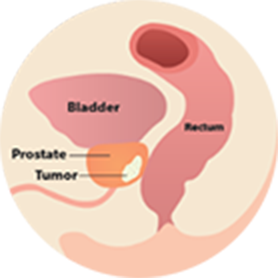
Anatomy Without
SpaceOAR
Hydrogel
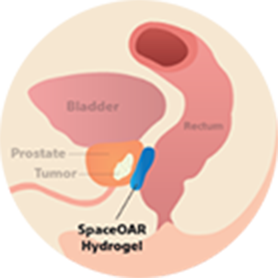
Anatomy With
SpaceOAR
Hydrogel
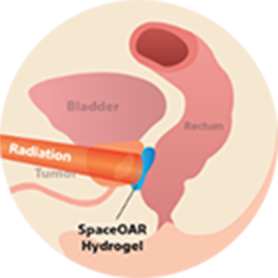
SpaceOAR
Hydrogel With
Radiation Therapy
Has SpaceOAR Hydrogel
Been Clinically Tested?
SpaceOAR Hydrogel has been evaluated in many clinical studies and shown to be effective in reducing radiation to organs at risk. In the U.S., 222 prostate cancer patients participated in a multi-center, randomized, patient-blinded clinical study. Study results showed that the hydrogel was safe and effective. The average SpaceOAR Hydrogel study patient gained ½ inch (1.3 cm) of space between the prostate and rectum, and had a substantial reduction in radiation dose to the rectum resulting in significantly fewer rectal side effects.1
Follow-Up Study
Three years after treatment, patients from the study were asked to report on their quality of life for bowel, urinary and sexual functions. Control patients were 8 times more likely to have a decline in bowel, urinary and sexual quality of life when compared to SpaceOAR Hydrogel patients at a median of 3 years. These patient-reported outcomes showed that SpaceOAR Hydrogel patients experienced significantly fewer long-term rectal side effects, were more likely to maintain sexual function, and showed significantly less decline in patient-reported urinary and bowel quality of life. To read the peer-reviewed clinical studies and other publications, please go to SpaceOAR™ Hydrogel Clinical Trial | FDA Cleared.
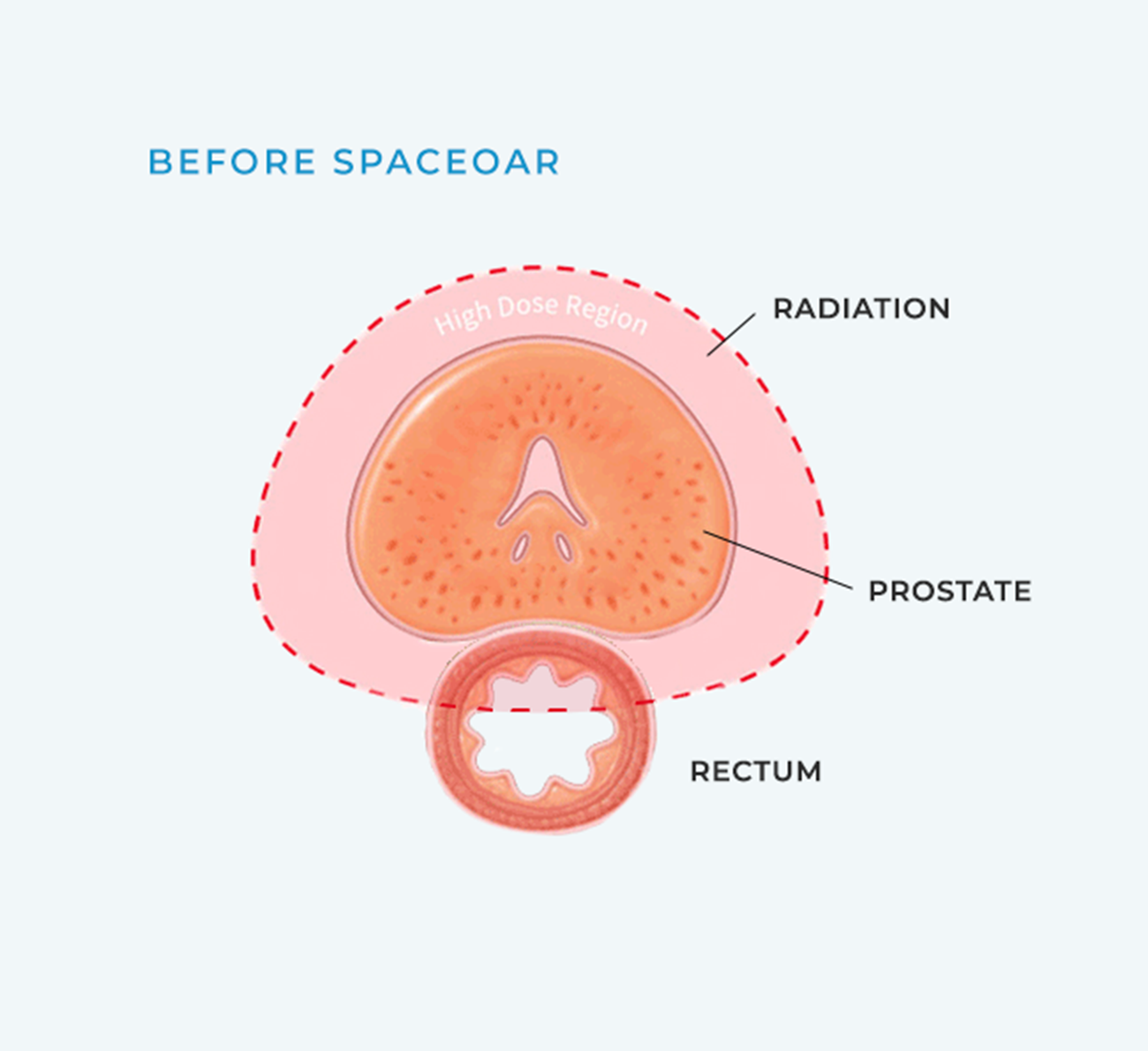
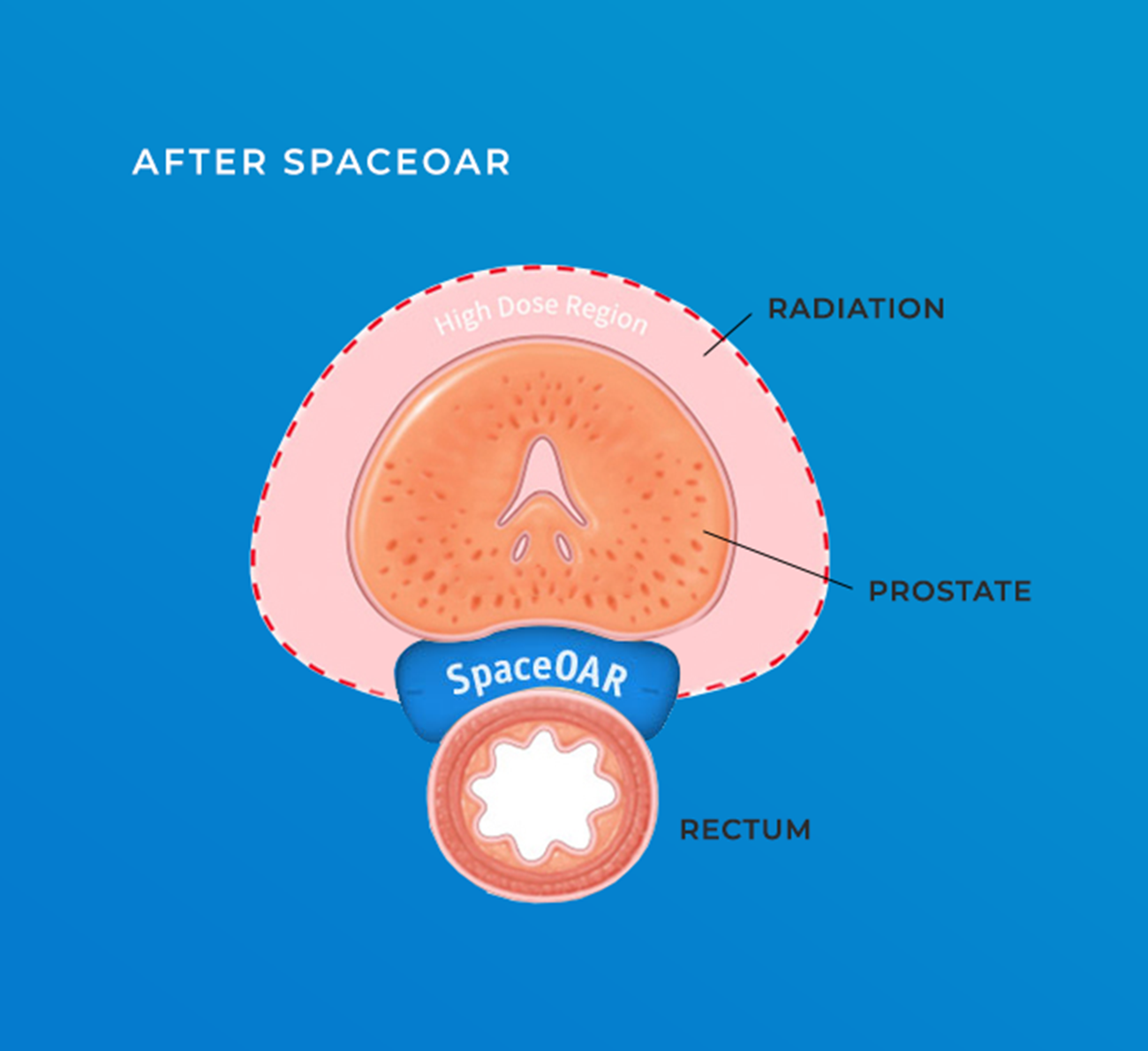
Will I be awake or asleep
during the procedure?
SpaceOAR Hydrogel can be implanted under local,
regional or general anesthesia.
You should discuss with your doctor which type of anesthesia will work best for you. It is typically not a lengthy procedure.
Will I feel any discomfort or pain
during or after the procedure?
Your doctor will use a local, regional or general anesthesia. And the injection site will be numbed, so you may feel a pinprick or pressure but should not feel any discomfort. Following the implantation, you may experience some temporary discomfort at the injection site. SpaceOAR Hydrogel patients typically report no prolonged discomfort from the implanted gel.
How soon after the procedure
can I return to my normal activities?
You should be able to go back to your normal activities soon. Check with your doctor about anything you should avoid after the procedure and during your radiation treatments.
*Content provided by SpaceOAR hydrogel
1. Mariados N, Sylvester J, Shah D, et al. Hydrogel spacer prospective multicenter randomized controlled pivotal trial: Dosimetric and clinical effects of perirectal spacer application in men undergoing prostate image guided intensity modulated radiation therapy. Int J Radiat Oncol Biol Phys. 2015 Aug 1;92(5):971-7.



